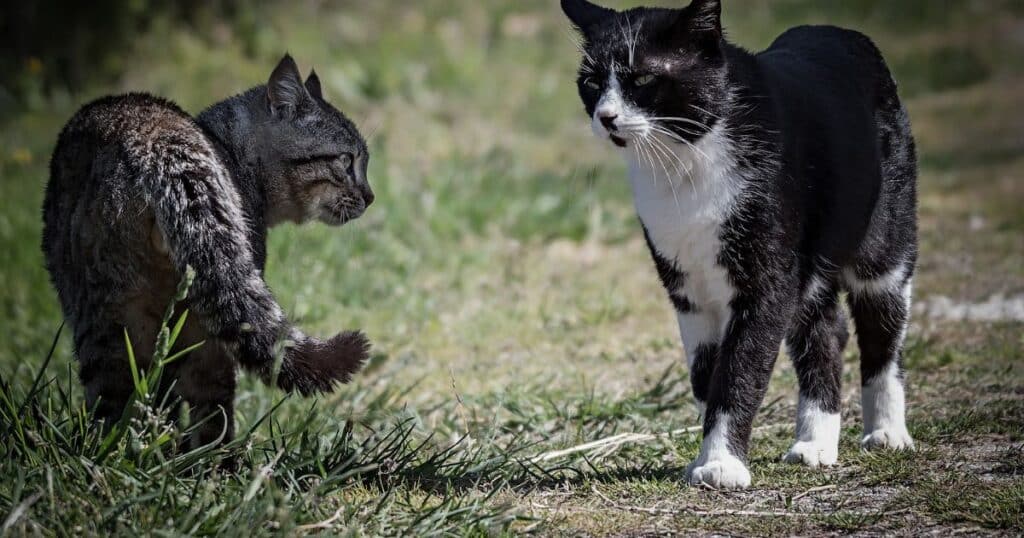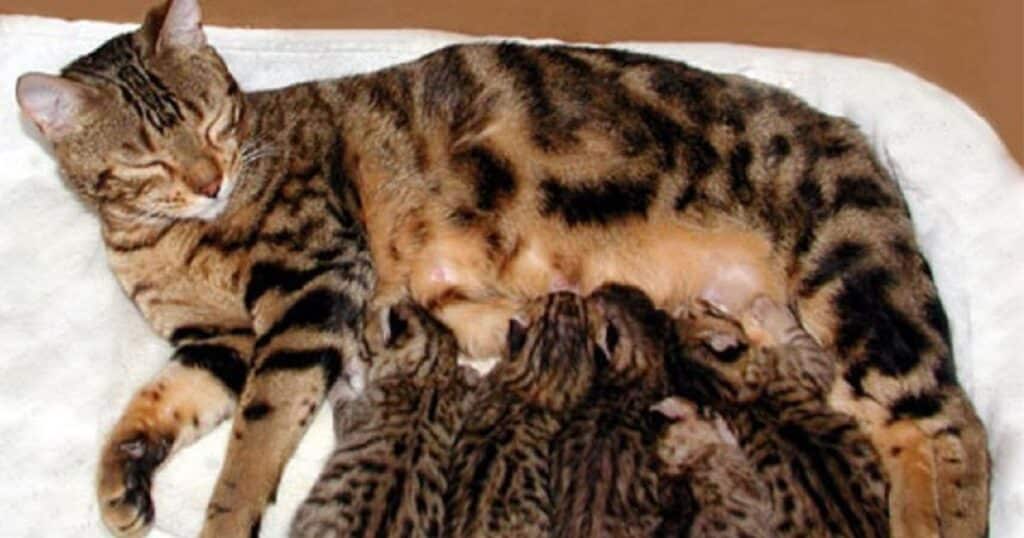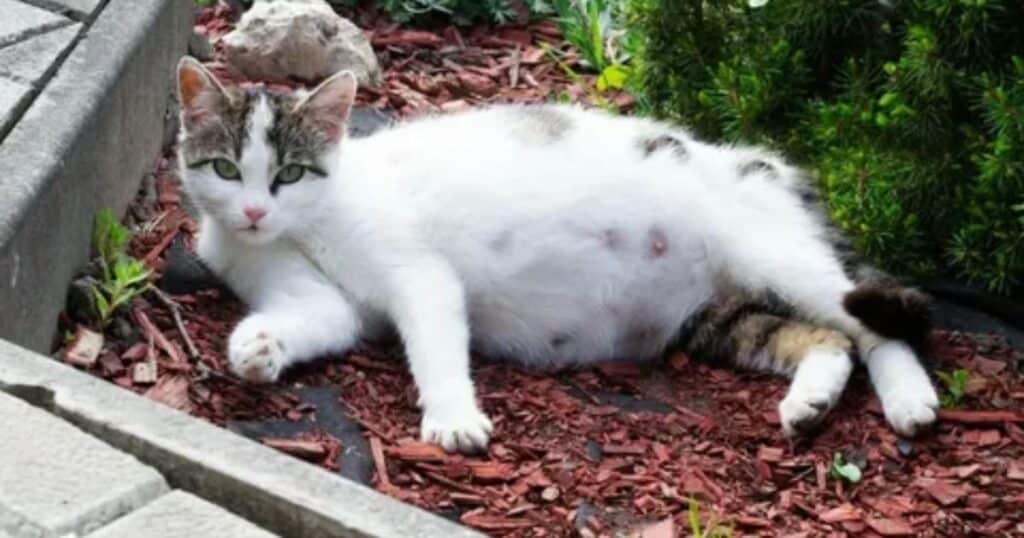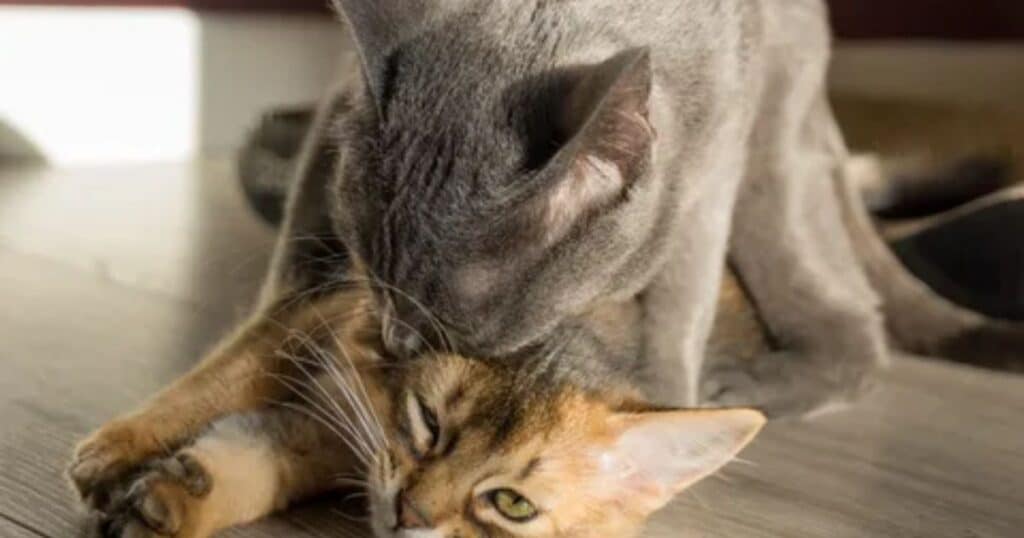Ever wondered about the secret love lives of our feline friends? As cat owners, we often focus on the cuddly, playful aspects of our pets’ lives. But understanding how cats reproduce is crucial for responsible pet ownership. In this comprehensive guide, we’ll delve into the fascinating world of feline mating.
From courtship rituals to pregnancy and beyond, we’ll explore the question: how do cats have sex? Whether you’re a curious cat lover or a potential breeder, this article will provide you with in-depth knowledge about cat reproduction. So, let’s embark on this journey into the intimate lives of our purring companions!
The Basics of Cat Mating
To understand how cats have sex, we first need to grasp the fundamentals of feline reproduction. Cats are efficient breeders, which explains why stray cat populations can quickly get out of control. Let’s break down the key aspects of cat mating.
Sexual Maturity in Cats
Cats reach sexual maturity surprisingly early. Here’s a quick breakdown:
- Female cats (queens): 4-6 months old
- Male cats (toms): 6-8 months old
However, it’s important to note that while cats can physically reproduce at these ages, it’s not recommended. Early breeding can lead to health complications and stunted growth. Most veterinarians advise waiting until a cat is at least a year old before breeding.
MORE POST: Choosing The Best Litter Box For Your Maine Coon Cat: A COMPREHENSIVE GUIDE
Estrus Cycle (Heat) in Female Cats
Female cats go through a reproductive cycle called estrus, commonly known as “heat.” Unlike humans, cats are induced ovulators, meaning they release eggs in response to mating. Here are some key facts about a cat’s heat cycle:
- Frequency: Every 2-3 weeks during breeding season
- Duration: 3-7 days
- Breeding season: Typically spring and fall, but can vary
- Signs of heat: Increased vocalization, restlessness, rolling on the floor, raising hindquarters
Interestingly, indoor cats may go into heat year-round due to artificial lighting affecting their hormonal cycles.
Male Cat Behavior During Mating Season

When female cats are in heat, male cats in the vicinity take notice. Toms exhibit distinct behaviors during mating season:
- Increased roaming and territory marking
- Urine spraying with a strong, pungent odor
- Loud yowling to attract females
- Aggressive behavior towards other male cats
- Loss of appetite and weight loss
These behaviors can be quite disruptive, which is one reason why many pet owners choose to neuter their male cats.
Pheromones and Their Role in Attraction
Pheromones play a crucial role in cat mating. These chemical signals are nature’s way of ensuring successful reproduction. Here’s how they work:
- Female cats release pheromones in their urine when in heat
- Male cats have a highly developed vomeronasal organ (Jacobson’s organ) to detect these pheromones
- Pheromones can attract male cats from up to a mile away
- The flehmen response (curling of the upper lip) helps male cats analyze pheromones
This powerful chemical communication is a key factor in how cats find mates and initiate the mating process.
How Do Cats Have Sex?
Now that we’ve covered the basics, let’s get to the heart of the matter: how do cats actually have sex? The process is more complex than you might think, involving specific behaviors and physical adaptations.
Courtship Rituals and Behaviors
Before mating occurs, cats engage in a courtship dance. This ritual serves several purposes:
- Allows the female to select a suitable mate
- Prepares both cats physically and mentally for mating
- Ensures the female is receptive to the male’s advances
The courtship process typically involves:
- Vocalization: Both cats may yowl, meow, and purr to communicate interest.
- Scent marking: The male may rub against objects to leave his scent.
- Chasing: The female often runs away, encouraging the male to pursue her.
- Rolling: The female may roll on the ground, exposing her belly.
- Head butting and rubbing: A sign of affection and acceptance.
These behaviors can last anywhere from a few minutes to several hours before actual mating begins.
The Mating Process Step-by-Step
When both cats are ready, the mating process follows a specific sequence:
- Mounting: The male cat mounts the female from behind.
- Grasping: He grasps her neck with his teeth (this is not aggressive but helps maintain position).
- Penetration: The male’s barbed penis enters the female’s vagina.
- Thrusting: This lasts only a few seconds.
- Ejaculation: The male releases sperm.
- Withdrawal: The male quickly dismounts, often due to the female’s reaction.
- Female reaction: The female often yowls and may swat at the male.
- Rolling and grooming: Both cats may roll on the ground and groom themselves.
This process is typically repeated several times over the course of a few days while the female is in heat.
Why Do Cats Make Those Noises?
The vocalizations during cat mating can be quite startling. Here’s why cats are so noisy during sex:
- Female yowling: This loud cry occurs at the moment of withdrawal. It’s thought to be a reaction to the male’s barbed penis, which stimulates ovulation.
- Male yowling: Males vocalize to attract females and warn off other males.
- Hissing and growling: These sounds may occur if the female is not fully receptive.
While alarming to humans, these sounds are a normal part of feline mating behavior.
Duration and Frequency of Mating
Cat mating is brief but frequent:
- Each mating session lasts only 1-2 minutes
- Cats may mate 10-20 times a day during the female’s heat
- This frequency increases the chances of successful fertilization
It’s a demanding process, which is why cats often lose weight during mating season.
Pregnancy and Birth

If mating is successful, the female cat will become pregnant. Let’s explore what happens next.
Gestation Period
The cat gestation period is relatively short:
- Average duration: 63-65 days
- Range: 58-71 days
During this time, the developing kittens grow rapidly within the mother’s uterus.
Signs of Pregnancy in Cats
Detecting feline pregnancy early can be challenging, but here are some signs to watch for:
- Weight gain: Noticeable around 3-4 weeks
- Enlarged, pink nipples: Due to increased blood flow
- Increased appetite: To support growing kittens
- Nesting behavior: Seeking quiet, secluded spots
- Vomiting: Similar to morning sickness in humans
- Affectionate behavior: Some cats become more loving
- Swollen abdomen: Visible in the later stages
A veterinarian can confirm pregnancy through physical examination, ultrasound, or x-ray.
Preparing for Kittens
As the due date approaches, it’s crucial to prepare for the new arrivals:
- Create a quiet, warm nesting area
- Provide extra food and water
- Have clean towels and a heating pad ready
- Know your vet’s emergency contact information
Most cats handle birth well on their own, but it’s important to be prepared for complications.
The Birthing Process
Cat labor, known as queening, typically proceeds as follows:
- Pre-labor: Restlessness, nesting, loss of appetite (12-24 hours)
- Stage 1: Contractions begin, may last several hours
- Stage 2: Active labor, each kitten is born (10-60 minutes per kitten)
- Stage 3: Placenta is delivered after each kitten
Cats usually give birth to 3-5 kittens, but litters can range from 1 to 12. The entire process can take several hours.
Reproduction and the Cat Lifecycle
Understanding how reproduction fits into a cat’s life cycle helps us appreciate the biological drives behind mating behavior.
From Kitten to Sexually Mature Adult
A cat’s journey to sexual maturity is rapid:
| Age | Developmental Stage |
| 0-2 weeks | Neonatal period, eyes closed |
| 2-8 weeks | Eyes open, weaning begins |
| 8-16 weeks | Juvenile period, rapid growth |
| 4-6 months | Females can enter first heat |
| 6-8 months | Males become sexually mature |
| 1 year | Fully grown, ideal breeding age |
This quick development is a remnant of cats’ wild ancestry, where early reproduction was key to survival.
How Often Can Cats Reproduce?
Cats are prolific breeders:
- Females can have 2-3 litters per year
- Gestation is about 2 months
- Cats can become pregnant while still nursing a previous litter
- A single pair of cats can theoretically produce 12 kittens in a year
This high reproductive rate is why spaying and neutering are so important for controlling cat populations.
Impact of Breeding on a Cat’s Lifespan

Frequent breeding can take a toll on a cat’s health and longevity:
- Increased risk of mammary tumors
- Higher chance of uterine infections
- Stress on the body from repeated pregnancies
- Potential for injury during mating
Spayed and neutered cats generally live longer, healthier lives than their breeding counterparts.
Cat Breeding and Genetics
For those interested in cat breeding, understanding genetics is crucial. Let’s explore some key concepts.
Purebred vs. Mixed Breed Cats
The genetic makeup of cats determines their physical and behavioral traits:
- Purebred cats: Result from selective breeding for specific traits
- Mixed breed cats: Often healthier due to genetic diversity
Here’s a comparison:
| Aspect | Purebred Cats | Mixed Breed Cats |
| Predictability | High | Low |
| Genetic diversity | Low | High |
| Health issues | More prone to inherited disorders | Generally healthier |
| Cost | Higher | Lower |
Inherited Traits and Genetic Diversity
Cat genetics are complex, with many traits determined by multiple genes:
- Coat color and pattern
- Eye color
- Body shape
- Personality traits
Genetic diversity is crucial for overall species health. Inbreeding can lead to:
- Weakened immune systems
- Higher rates of genetic disorders
- Reduced fertility
Responsible Breeding Practices
Ethical cat breeding focuses on:
- Health testing for genetic disorders
- Maintaining genetic diversity
- Breeding for temperament as well as appearance
- Providing excellent care for breeding cats and kittens
- Limiting the number of litters a cat produces
- Finding responsible homes for all kittens
Responsible breeders prioritize the health and well-being of their cats over profit.
Health Considerations
Reproduction carries health risks for cats. Being aware of these issues is part of responsible pet ownership.
Sexually Transmitted Diseases in Cats
Yes, cats can contract STDs. Some common feline STDs include:
- Feline Immunodeficiency Virus (FIV): Similar to HIV in humans
- Feline Leukemia Virus (FeLV): Can cause cancer and immune suppression
- Feline Infectious Peritonitis (FIP): A fatal disease caused by a coronavirus
- Chlamydia: A bacterial infection affecting the eyes and respiratory system
These diseases underscore the importance of testing and vaccinating cats, especially those allowed outdoors.
Complications During Pregnancy and Birth
While most cat pregnancies proceed normally, complications can occur:
- Miscarriage
- Stillbirths
- Dystocia (difficult labor)
- Eclampsia (low blood calcium)
- Mastitis (mammary gland infection)
Regular vet check-ups during pregnancy can help catch and treat issues early.
Post-Partum Care for Mother Cats
After giving birth, mother cats need special care:
- Provide a high-calorie diet to support milk production
- Ensure a quiet, stress-free environment
- Monitor for signs of infection or mastitis
- Allow the mother to nurse and care for kittens undisturbed
- Schedule a post-partum vet check-up
With proper care, most mother cats recover quickly from birth and excel at caring for their kittens.
How to Tell If a Cat Is Pregnant

Recognizing the signs of feline pregnancy allows for better care. Let’s delve deeper into the indicators.
Physical Changes to Look Out For
As pregnancy progresses, you may notice:
- Pinking up: Nipples become larger and pinker around 3 weeks
- Weight gain: Especially noticeable in the abdomen
- Swollen belly: Becomes obvious in the last few weeks
- Increased appetite: She’s eating for multiple kittens!
- Fur changes: Some cats’ fur may become thicker or shinier
Behavioral Shifts During Pregnancy
Pregnant cats often exhibit behavior changes:
- Increased affection and demand for attention
- More frequent napping or sleeping
- Nesting behaviors (seeking quiet, secluded spots)
- Decreased interest in playing or going outside
- Possible mood swings or irritability
When to Consult a Vet
It’s always a good idea to have a vet confirm pregnancy. Seek veterinary care if you notice:
- Sudden weight loss
- Loss of appetite
- Lethargy or depression
- Vaginal discharge
- Excessive vomiting
Early and regular vet care ensures the best outcome for mother and kittens.
Spaying and Neutering Your Cat
Given cats’ prolific breeding capabilities, spaying and neutering are crucial for population control and cat health.
Benefits of Spaying and Neutering
These procedures offer numerous advantages:
- Population control: Reduces the number of homeless cats
- Health benefits: Lowers risk of certain cancers and infections
- Behavioral improvements: Reduces roaming, spraying, and aggression
- Longevity: Spayed/neutered cats often live longer
- Cost-effective: Cheaper than caring for multiple litters
- Quiet home: No noisy heat cycles or mating behaviors
Best Age for the Procedures
Veterinary recommendations have evolved:
- Traditional view: Spay/neuter at 6 months
- Current recommendation: As early as 8-16 weeks (pediatric spay/neuter)
- Rationale: Prevents unwanted litters, easier recovery, no negative health impacts
Always consult with your vet to determine the best timing for your cat.
Myths and Misconceptions
Let’s debunk some common myths about spaying and neutering:
- Myth: Cats should have one litter before being spayed. Fact: There’s no health benefit to letting a cat have kittens first.
- Myth: Neutering causes weight gain. Fact: Proper diet and exercise, not neutering, control weight.
- Myth: Spaying/neutering changes a cat’s personality. Fact: It may reduce hormone-driven behaviors but doesn’t alter core personality.
- Myth: It’s unnatural to spay/neuter. Fact: These procedures improve quality of life and help control overpopulation.
- Myth: Spaying/neutering is too expensive. Fact: Many low-cost options are available, and it’s cheaper than raising litters.
Conclusion
We’ve journeyed through the fascinating world of feline reproduction, answering the question: how do cats have sex? From the basics of cat mating to pregnancy, birth, and beyond, we’ve explored the intricacies of cat reproduction. Understanding these processes is key to responsible pet ownership.
Remember, while cat mating and reproduction are natural processes, uncontrolled breeding leads to overpopulation and suffering. Spaying and neutering are crucial tools in managing cat populations and promoting feline health. Whether you’re a cat owner, a potential breeder, or simply a feline enthusiast, this knowledge empowers you to make informed decisions about cat care.
As we marvel at the efficiency of feline reproduction, let’s also commit to being part of the solution. By spaying and neutering our pets, supporting trap-neuter-return programs, and educating others, we can ensure a better future for cats everywhere. After all, our feline friends give us so much joy – it’s only right that we look out for their well-being in return.
ALSO READ THIS POST: Smoke Maine Coon Cat Breed – Uncover The Majestic Beauty And Personality
FAQs About Cat Mating and Reproduction
To wrap up, let’s address some common questions about cat mating and reproduction:
Can cats get pregnant while nursing?
Yes, cats can go into heat and become pregnant while still nursing kittens. This is why it’s important to keep nursing mothers away from male cats if you don’t want more kitt
Do cats feel pleasure from sex?
While cats don’t experience sexual pleasure in the same way humans do, mating fulfills a biological urge. The act stimulates the release of hormones like oxytocin, which can create a sense of satisfaction. However, for female cats, mating can be uncomfortable due to the male’s barbed penis.
Why do cats scream when they mate?
Cats scream during mating primarily due to pain. The male cat’s penis has backward-facing barbs that stimulate ovulation in the female but also cause discomfort when withdrawn. This pain triggers the female’s loud vocalization, which is a normal part of the mating process.
How do cats actually mate?
Cat mating involves a brief but intense process. The male mounts the female from behind, grasping her neck with his teeth. He then penetrates her with his barbed penis for a few seconds of thrusting before ejaculation. The entire act typically lasts only 1-2 minutes but may be repeated multiple times during the female’s heat cycle.
What do female cats do while mating?
During mating, female cats take a receptive posture called lordosis, arching their backs and raising their hindquarters. They may also tread their back legs and move their tails to the side. After mating, females often yowl loudly, roll on the ground, and may swat at the male due to the discomfort caused by his barbed penis.

Davin Connor is an experienced author with 3 years in pets writing. Known for concise, informative content, he shares expertise on pet care, behavior, and health through his engaging articles.






